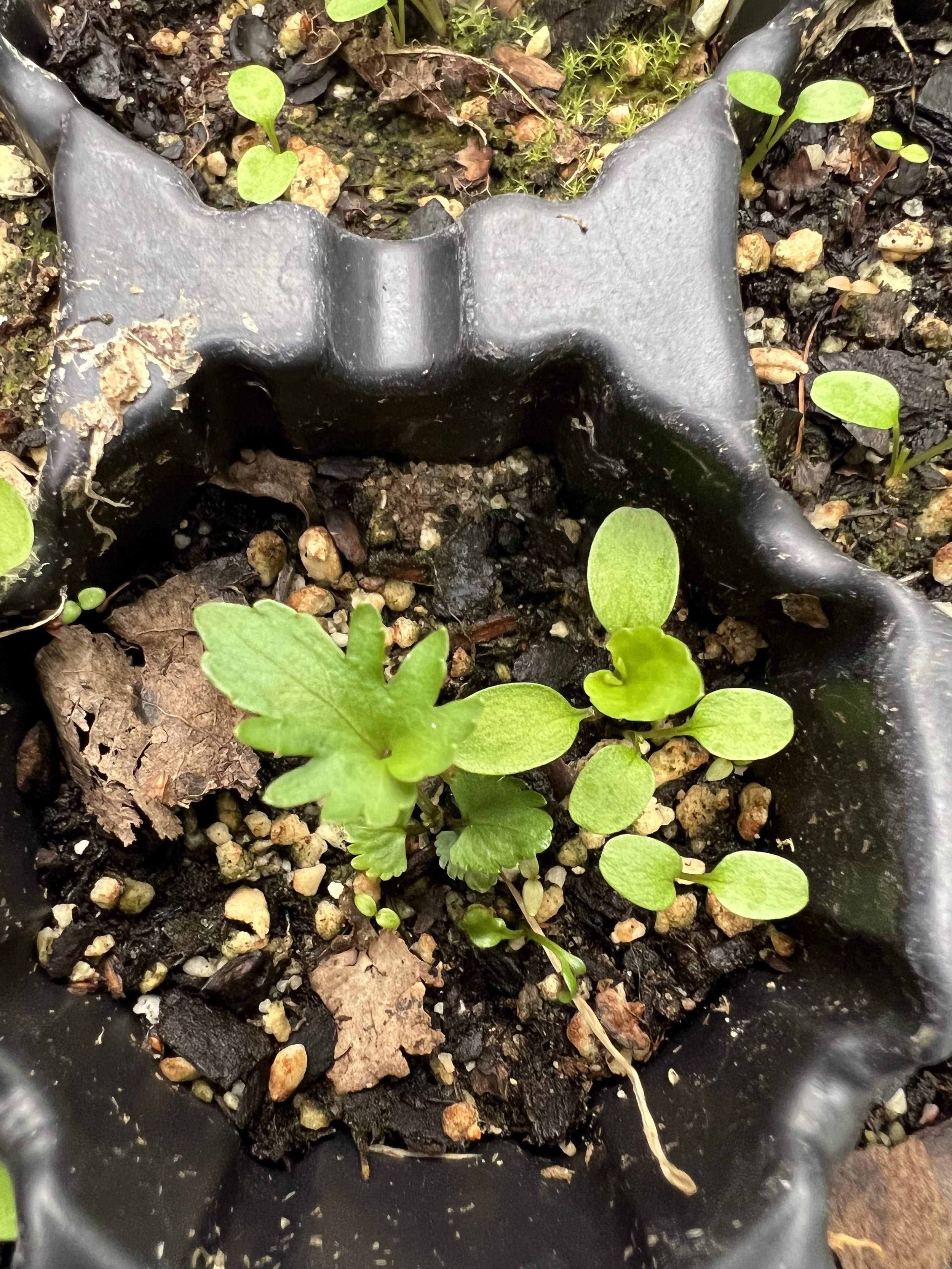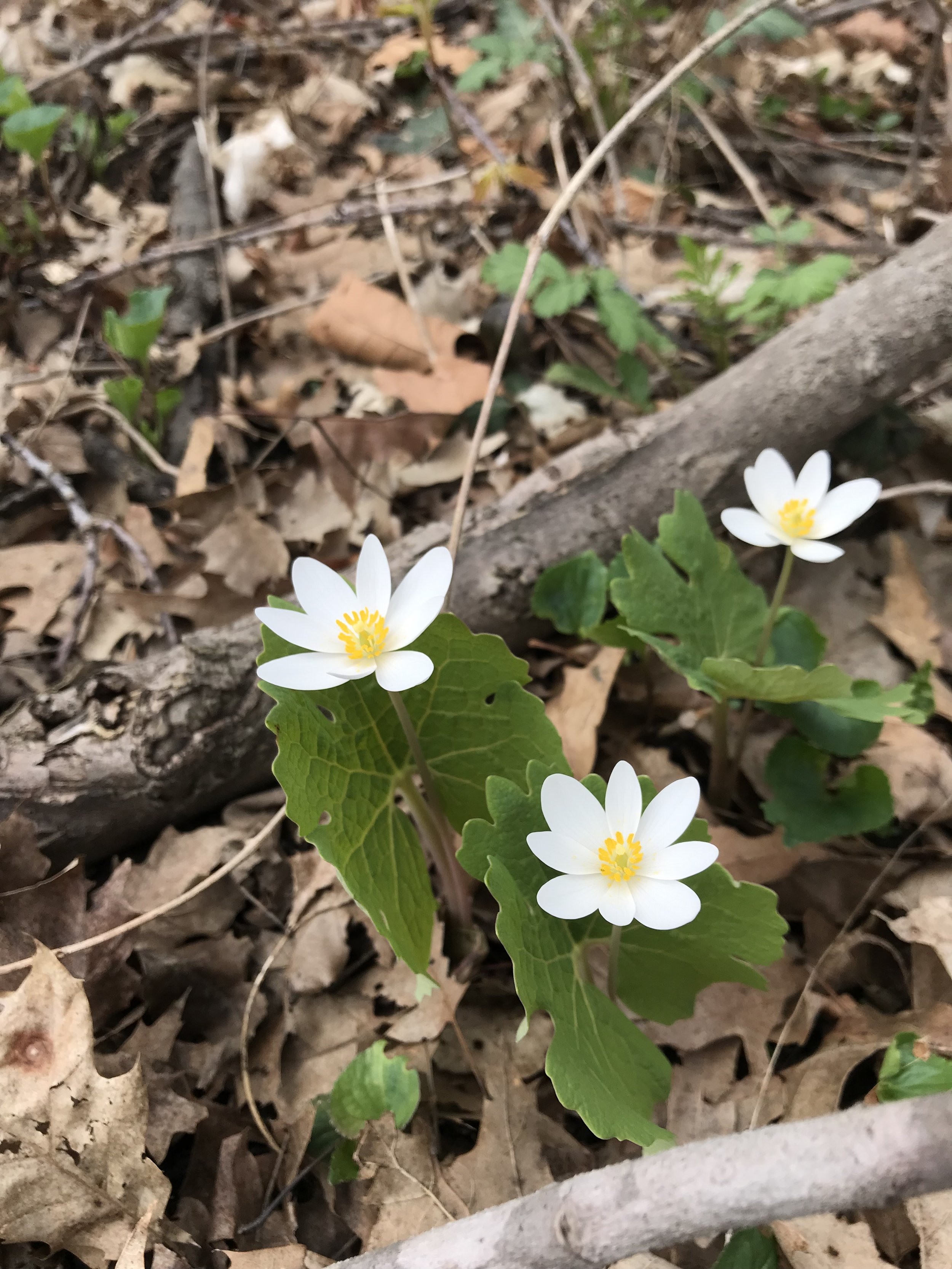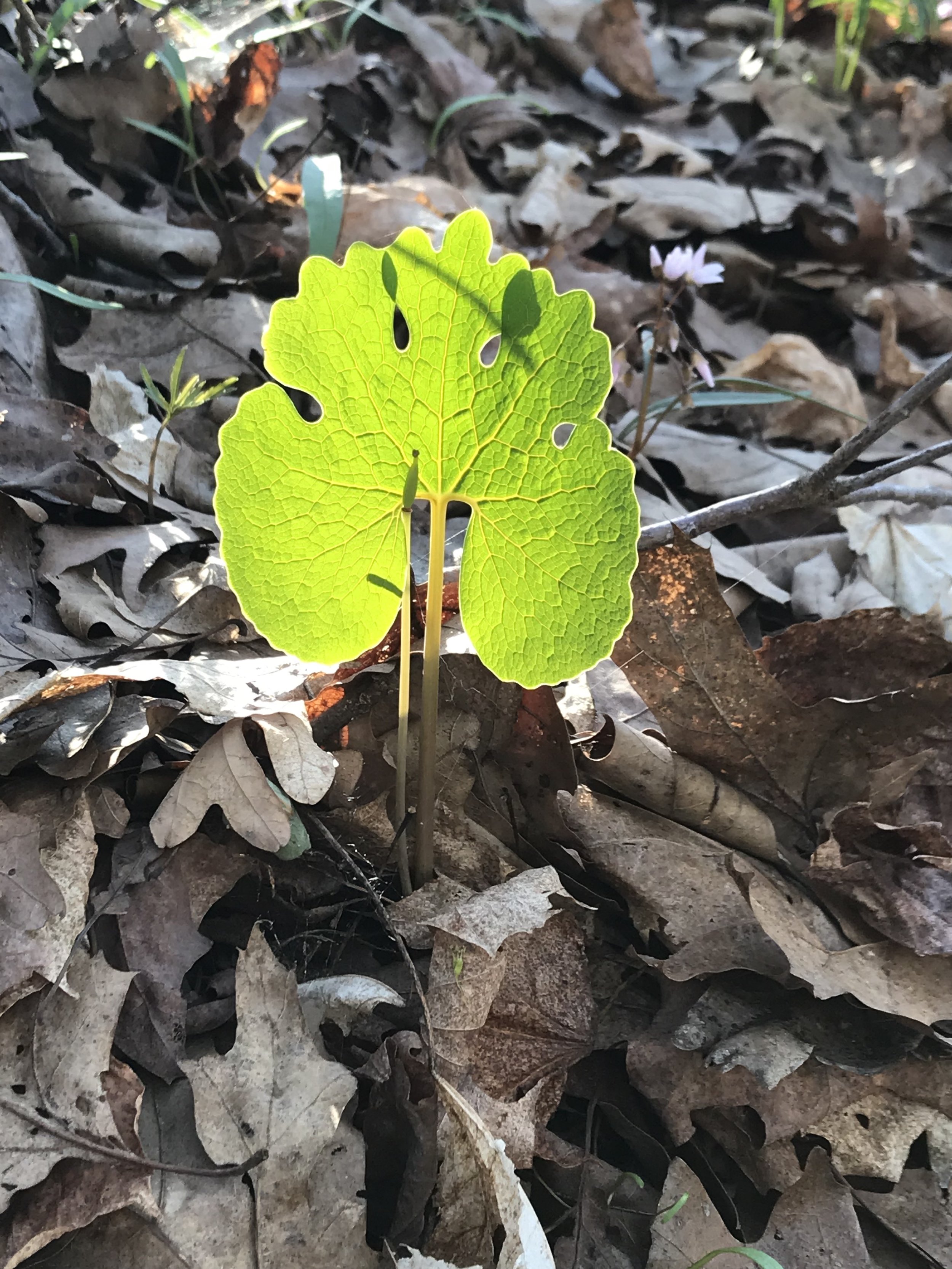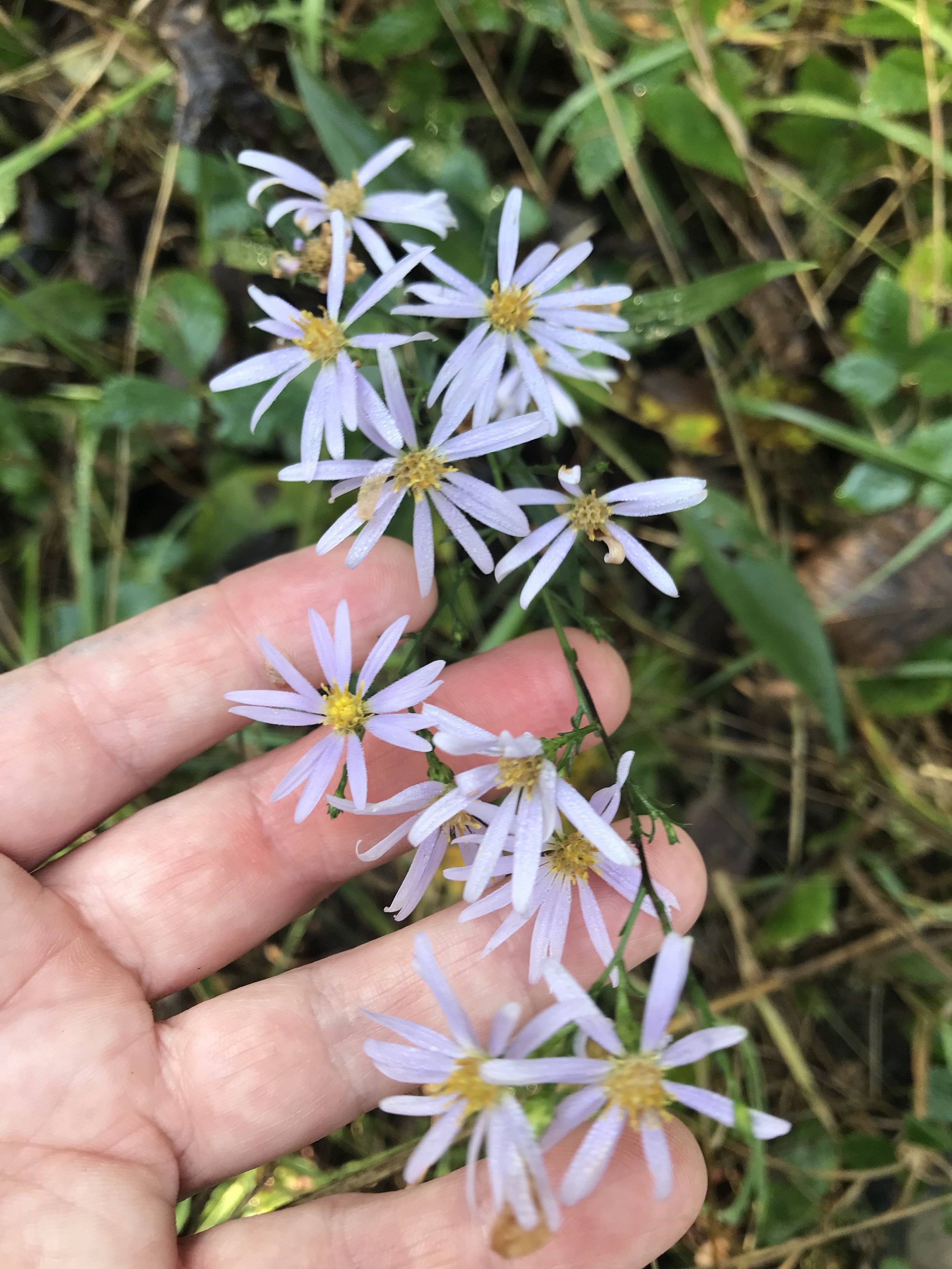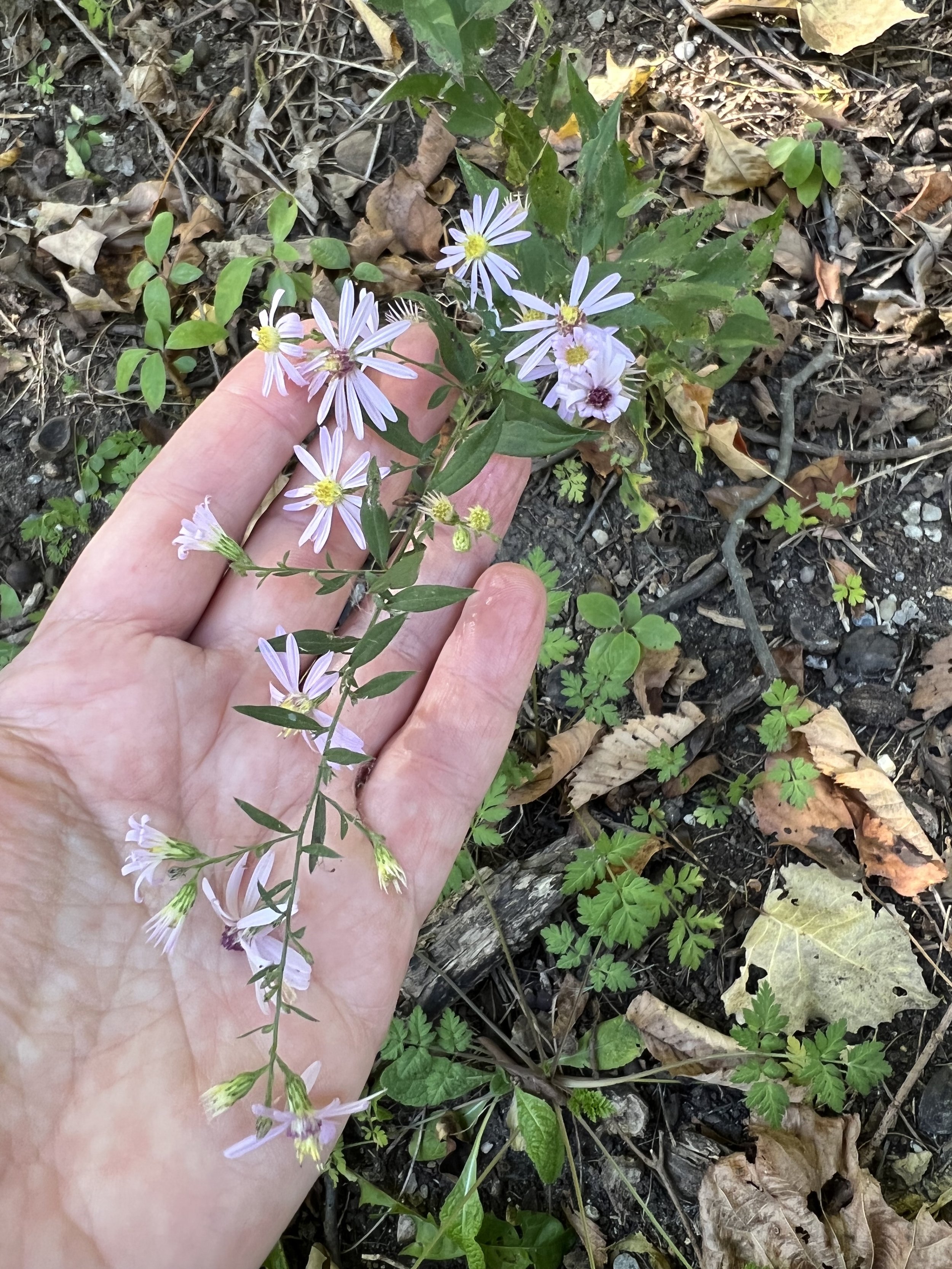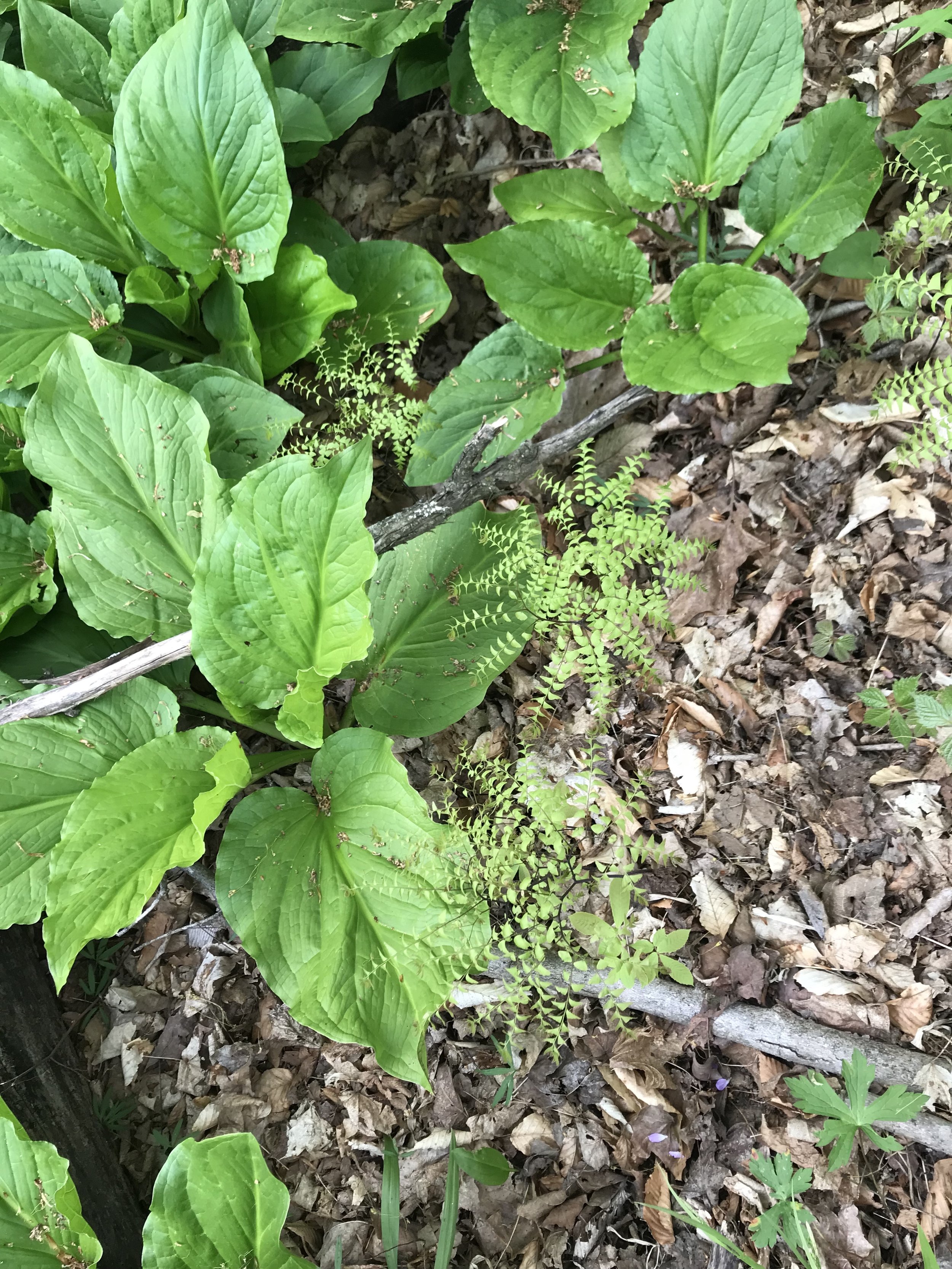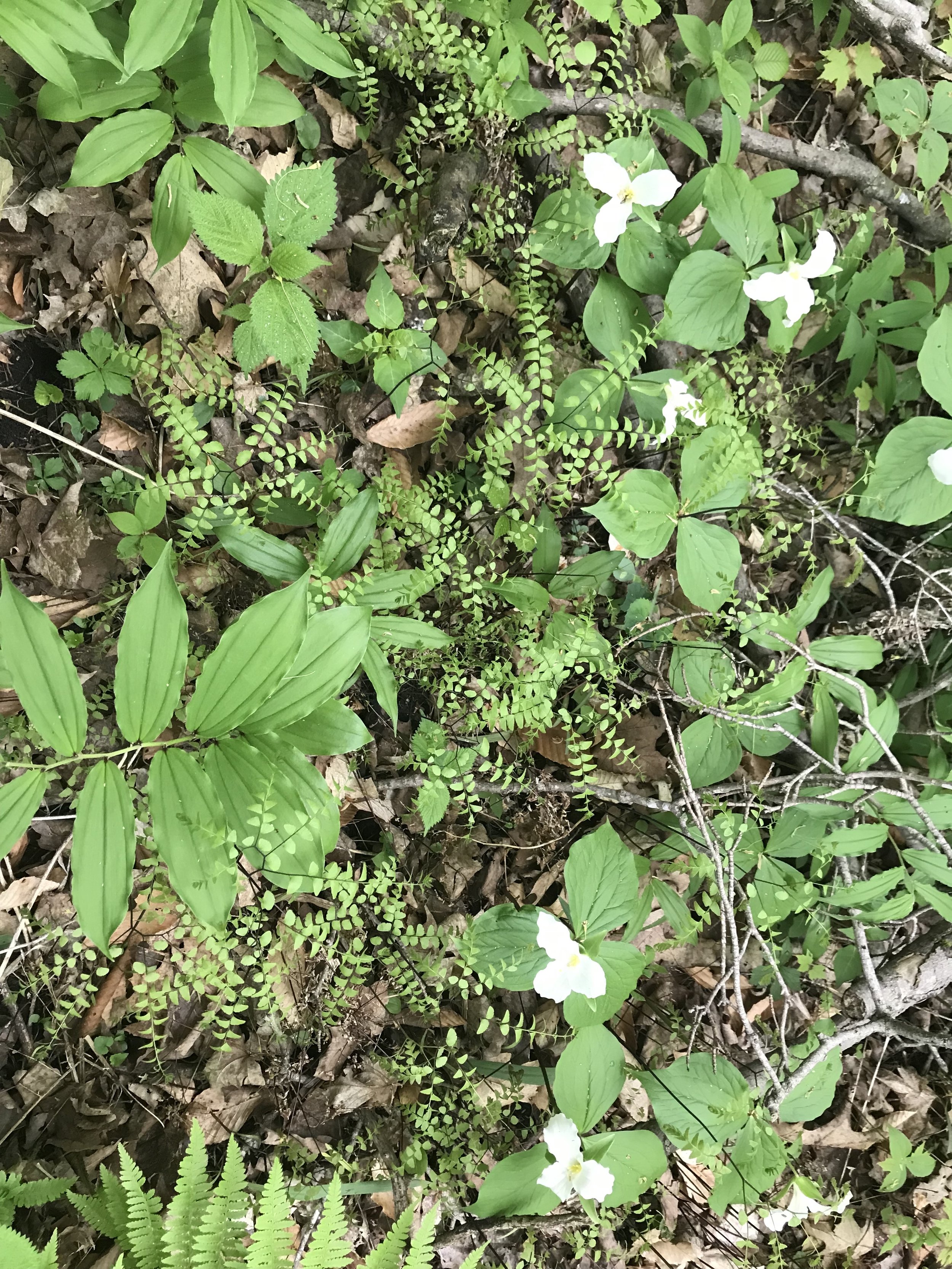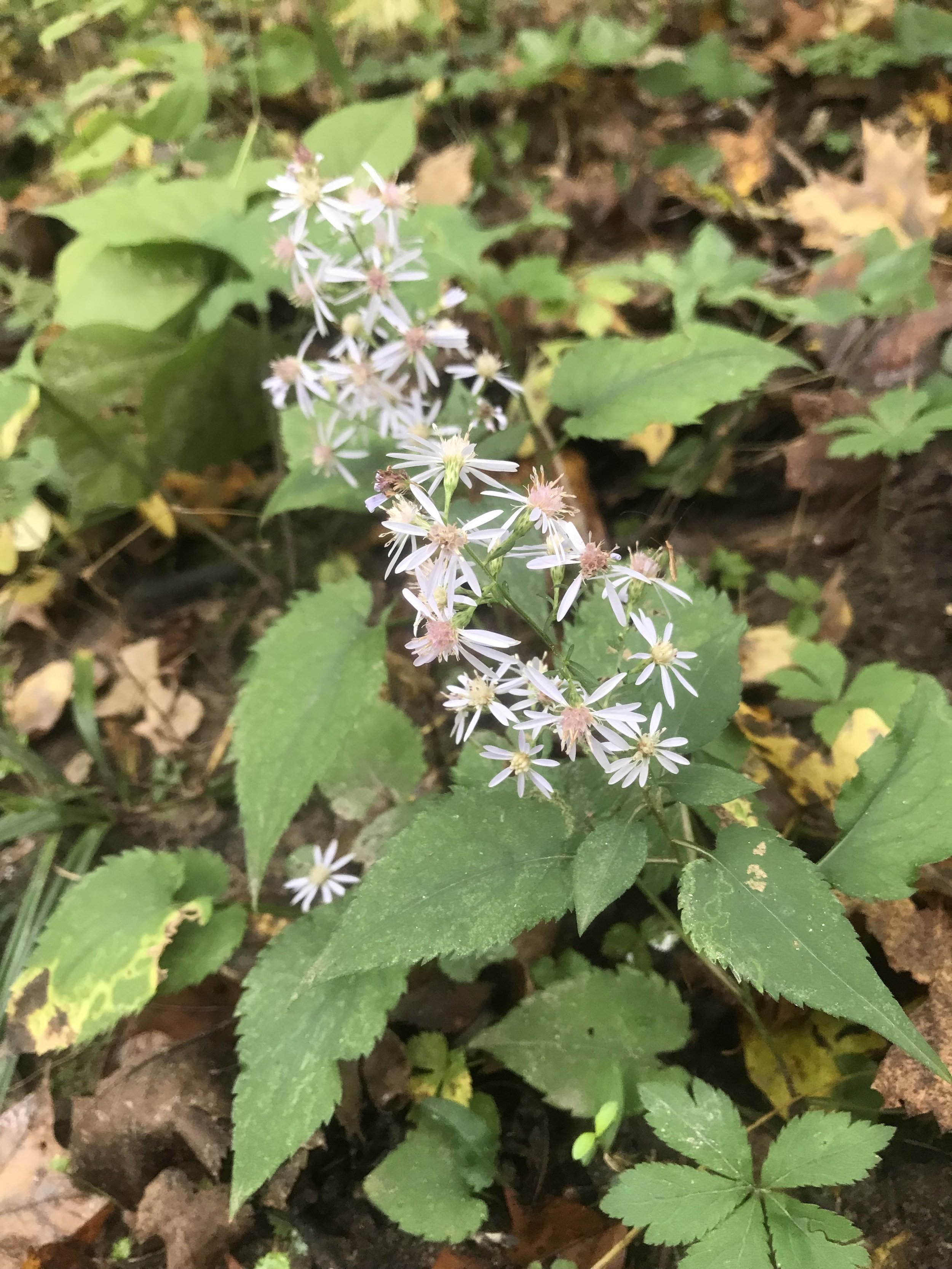 Image 1 of 5
Image 1 of 5

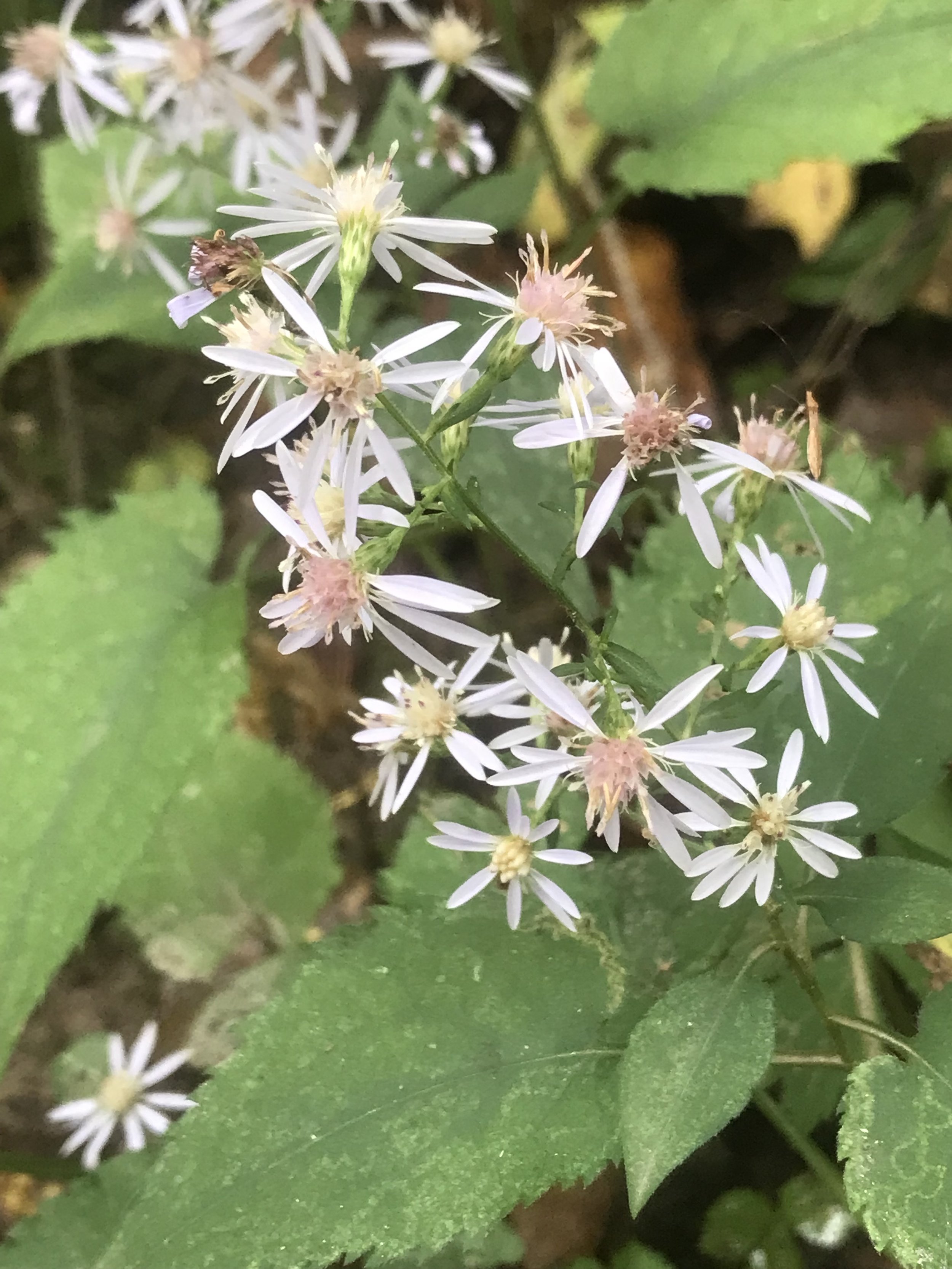 Image 2 of 5
Image 2 of 5

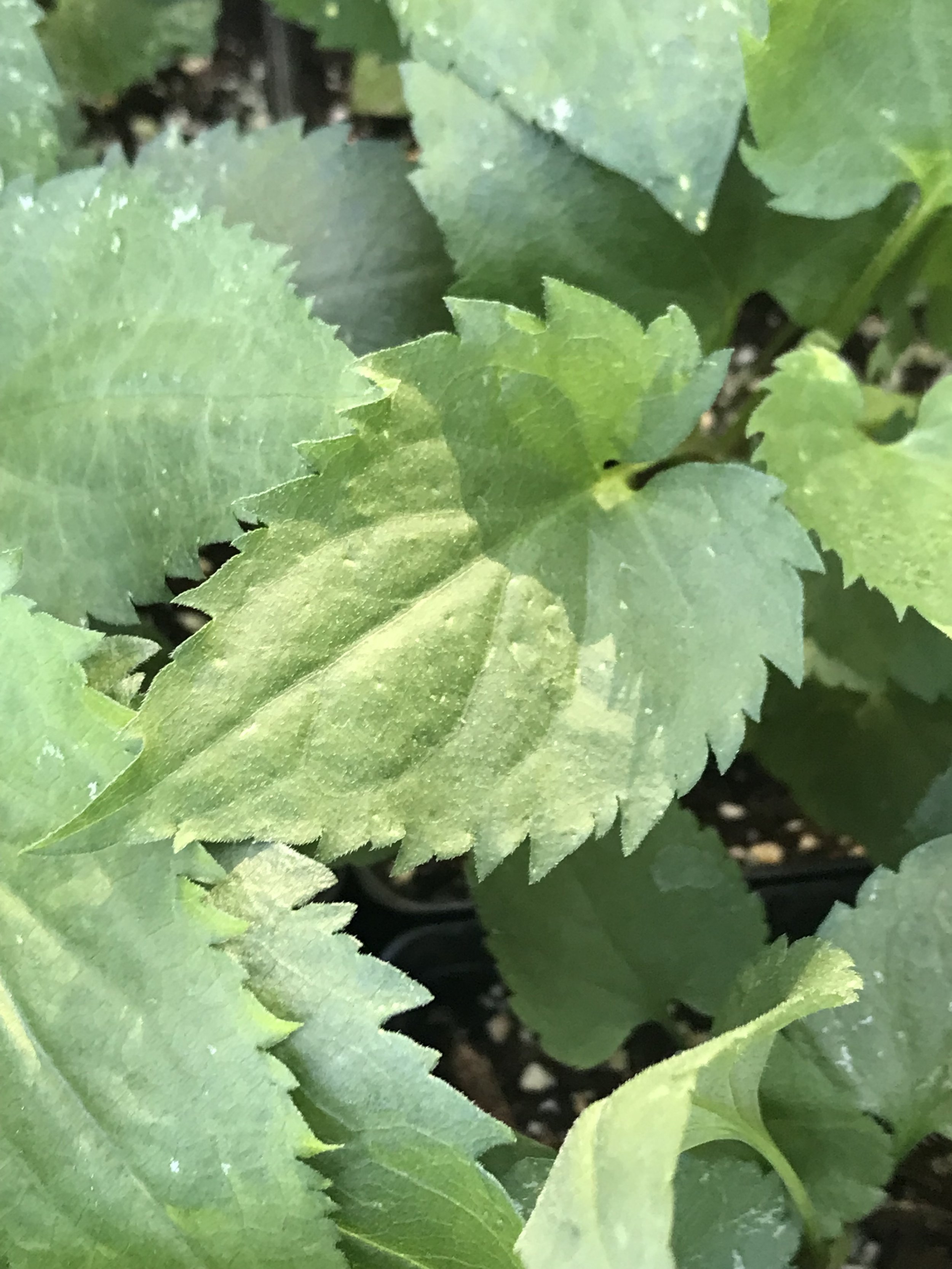 Image 3 of 5
Image 3 of 5

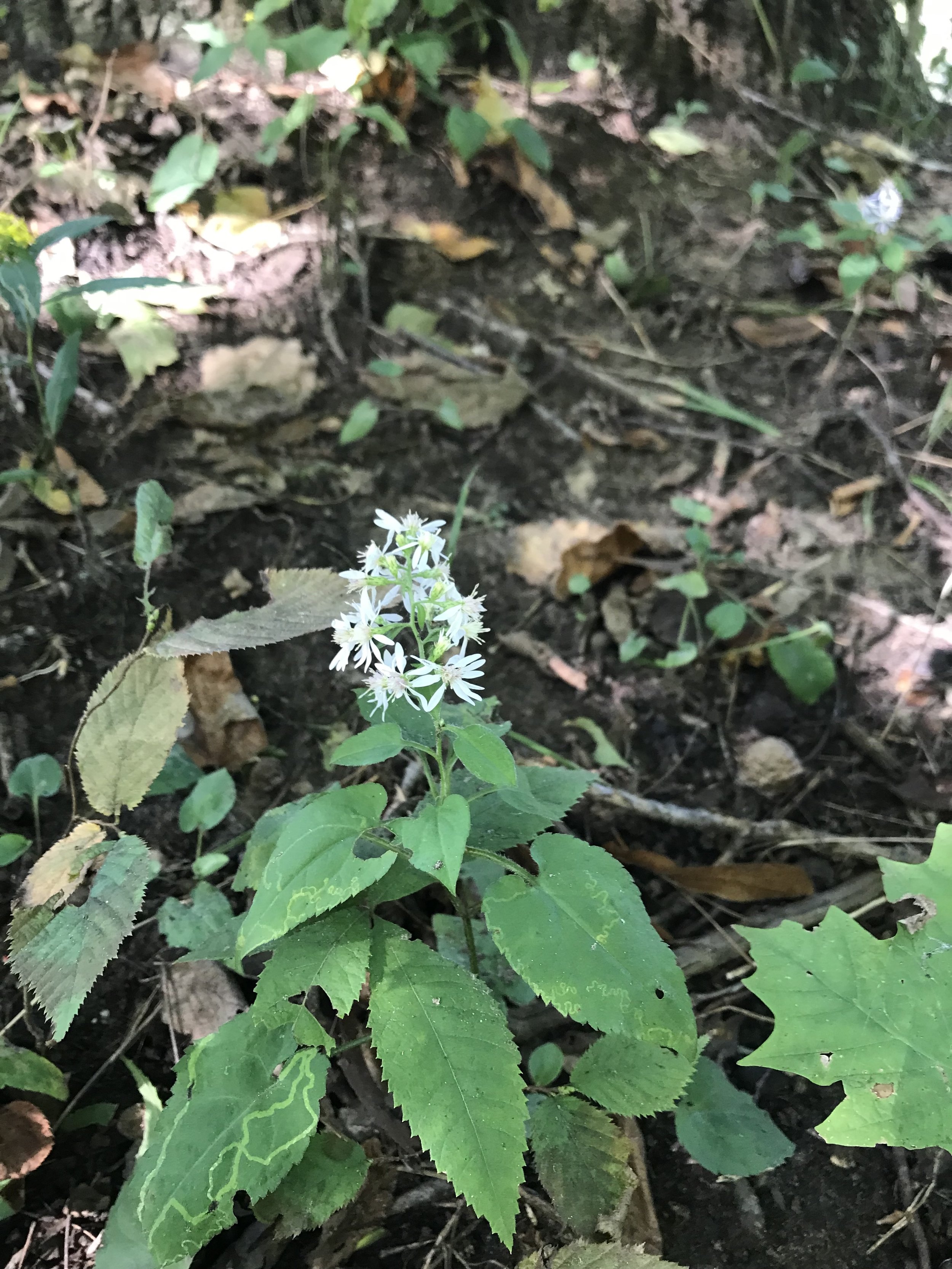 Image 4 of 5
Image 4 of 5

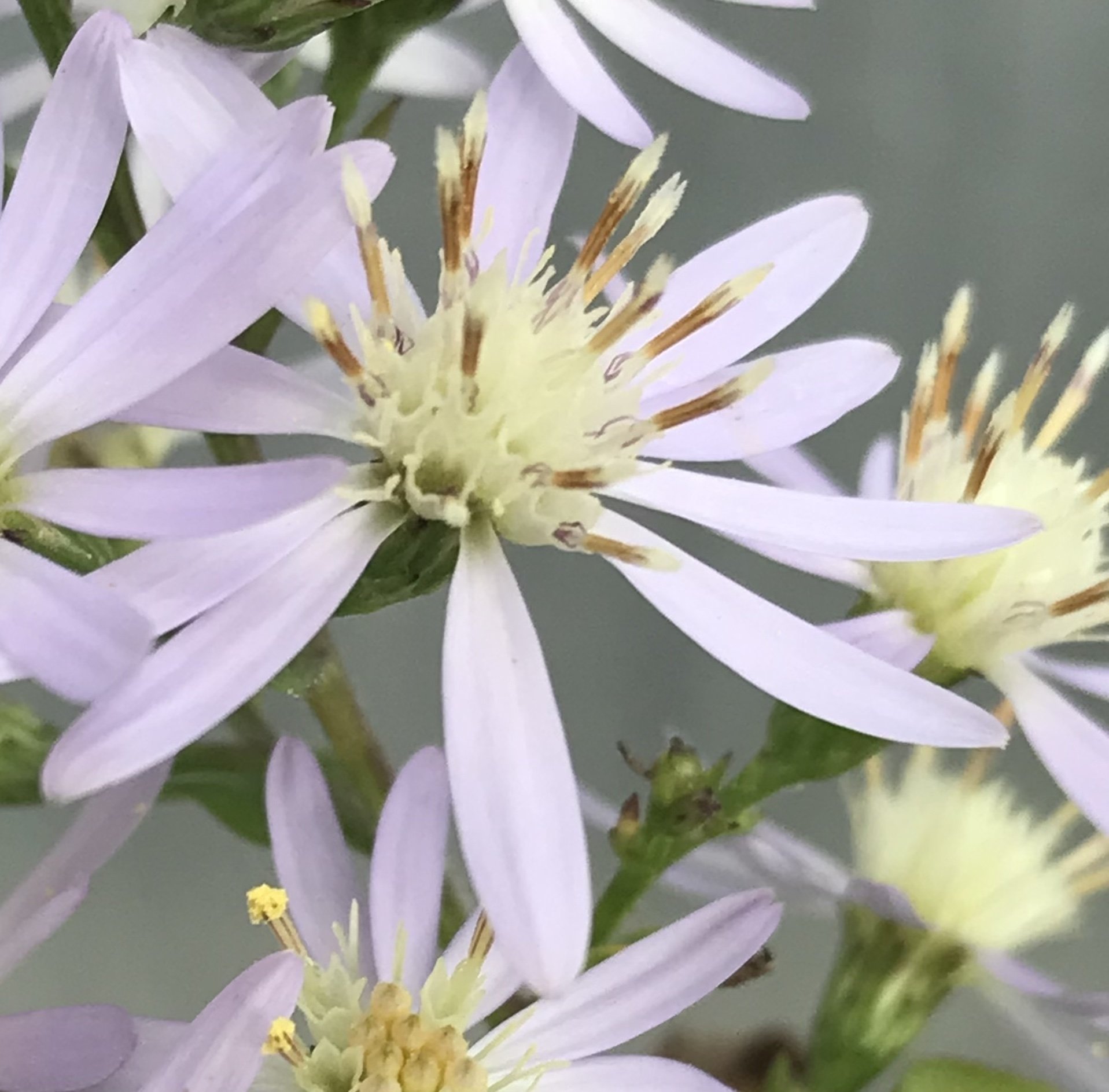 Image 5 of 5
Image 5 of 5






Heart-leaved Aster (Symphyotrichum cordifolium)
Heart-leaved Aster, also known as Blue Wood Aster, usually has pale purple to blue flowers, but they can be quite pale (see photos.). The leaves are serrate and come to an acute point at one end and a heart-shape nearer the stem. The petioles (leaf stems) are not winged, or at most slightly winged.
True Heart-leaved Aster plants grow to about 2 feet tall. I have seen hybrids of this plant that grow taller and have smaller flowers. Asters, in general, are quite capable of cross pollinating and there are a lot of hybrids that can be found which can make them tricky, and sometimes frustrating, to identify!
Heart-leaved Aster spreads by rhizome and while they don’t seem to get too carried away in the woodlands, in the home garden, they can spread rapidly. If you’d like this plant in your woodland garden, be prepared to control it a bit.
Heart-leaved Aster (Symphyotrichum cordifolium)
Michigan Flora reference page for state distribution: Heart-leaved Aster
height: 2 feet
bloom time: Sept-Nov.
soil: medium
sun: partial, shade
plant spacing: 12”
flower: bluish/purplish, can be quite pale
life cycle: perennial
family: Asteraceae
Heart-leaved Aster, also known as Blue Wood Aster, usually has pale purple to blue flowers, but they can be quite pale (see photos.). The leaves are serrate and come to an acute point at one end and a heart-shape nearer the stem. The petioles (leaf stems) are not winged, or at most slightly winged.
True Heart-leaved Aster plants grow to about 2 feet tall. I have seen hybrids of this plant that grow taller and have smaller flowers. Asters, in general, are quite capable of cross pollinating and there are a lot of hybrids that can be found which can make them tricky, and sometimes frustrating, to identify!
Heart-leaved Aster spreads by rhizome and while they don’t seem to get too carried away in the woodlands, in the home garden, they can spread rapidly. If you’d like this plant in your woodland garden, be prepared to control it a bit.
Heart-leaved Aster (Symphyotrichum cordifolium)
Michigan Flora reference page for state distribution: Heart-leaved Aster
height: 2 feet
bloom time: Sept-Nov.
soil: medium
sun: partial, shade
plant spacing: 12”
flower: bluish/purplish, can be quite pale
life cycle: perennial
family: Asteraceae
Heart-leaved Aster, also known as Blue Wood Aster, usually has pale purple to blue flowers, but they can be quite pale (see photos.). The leaves are serrate and come to an acute point at one end and a heart-shape nearer the stem. The petioles (leaf stems) are not winged, or at most slightly winged.
True Heart-leaved Aster plants grow to about 2 feet tall. I have seen hybrids of this plant that grow taller and have smaller flowers. Asters, in general, are quite capable of cross pollinating and there are a lot of hybrids that can be found which can make them tricky, and sometimes frustrating, to identify!
Heart-leaved Aster spreads by rhizome and while they don’t seem to get too carried away in the woodlands, in the home garden, they can spread rapidly. If you’d like this plant in your woodland garden, be prepared to control it a bit.
Heart-leaved Aster (Symphyotrichum cordifolium)
Michigan Flora reference page for state distribution: Heart-leaved Aster
height: 2 feet
bloom time: Sept-Nov.
soil: medium
sun: partial, shade
plant spacing: 12”
flower: bluish/purplish, can be quite pale
life cycle: perennial
family: Asteraceae
Consider adding Heart-leaved Aster or Short’s Aster to your woodland garden to supply needed nectar and pollen to fall insects. Birds will eat the seeds that are produced.








